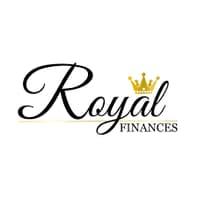Inside the World of Royal Finances: A Closer Look at Wealth and Accountability
In a realm where tradition intertwines with modernity, the finances of royal families have long intrigued the public. From opulent palaces and lavish ceremonies to the often-unseen intricacies of financial management, the economic affairs of monarchies are a complex tapestry woven from historical legacies and contemporary challenges. In this article, we delve into the world of royal finances, exploring the mechanisms behind wealth accumulation, expenditure, and the increasing calls for transparency in an age where accountability is paramount. Drawing on insights from Bloomberg and other reputable sources, we aim to uncover the layers of opulence and responsibility that define royal households across the globe, shedding light on how these storied institutions navigate the delicate balance between heritage and fiscal prudence.
Exploring the Intricacies of Royal Wealth Management and Transparency
Royal wealth management is a complex tapestry woven with history, tradition, and modern investment strategies. The sheer scale of royal assets, often comprising real estate holdings, art collections, and investments in diverse markets, requires a meticulous approach to balancing growth with preservation. Notably, transparency in royal finances, an issue frequently scrutinized by the public and media alike, is pivotal in fostering trust and accountability. Monarchies that engage with their citizens by revealing aspects of their financial portfolios often enhance their legitimacy, while also demonstrating a commitment to ethical stewardship of their wealth.
In recent years, an emphasis on sustainable investments and ethical financial practices has emerged within royal wealth management. This shift reflects not just global trends in finance but also a desire to align royal values with societal expectations. Key practices now include:
- Engagement in socially responsible investment (SRI) strategies
- Transparently publishing annual financial reports
- Collaborating with experts in sustainable finance
To further illustrate these points, the following table outlines notable royal families and their approaches to wealth management:
| Royal Family | Wealth Management Strategy | Transparency Level |
|---|---|---|
| House of Windsor | Investment in real estate and art | Publishing annual financial overview |
| House of Grimaldi | Focus on sustainable tourism and eco-investment | Regular public financial disclosures |
| House of Saud | Diversification across oil, real estate, and tech | Limited transparency with controlled media access |
Examining the Investment Strategies of Modern Monarchies
In recent years, royal families have diversified their investment portfolios, moving beyond traditional assets such as real estate and collectibles into more contemporary avenues including tech startups and sustainable investments. This evolution reflects a broader understanding of global economic trends and a commitment to social responsibility. Modern monarchies are now keen on investing in sectors that not only promise high returns but also align with values of sustainability and innovation, making them relevant in today’s financial landscape. Some of the key strategies employed include:
- Private Equity: Increasing stakes in private companies, especially in emerging markets.
- Green Bonds: Funding projects that tackle climate change while generating returns.
- Art and Antiquities: Investing in high-value assets that appreciate over time.
Additionally, the use of family offices has become more prevalent among these royal households, serving as dedicated entities to manage their wealth and investment strategies. This shift allows for a more tactical approach to financial growth and risk management, enabling royal families to adapt swiftly to market changes. These family offices often employ experts who provide insights into local and international markets, ensuring their investments are not only profitable but also contribute to long-term stability. The table below highlights some notable royal families and their preferred investment focuses:
| Royal Family | Investment Focus |
|---|---|
| The Saudi Royal Family | Energy and Technology |
| The British Royal Family | Real Estate and Sustainable Ventures |
| The Dutch Royal Family | Private Equity and Green Investments |
Recommendations for Enhancing the Sustainability of Royal Finances
To pave the way for a more sustainable financial future for royal households, it is essential to adopt practices that prioritize both fiscal responsibility and environmental stewardship. Key recommendations include:
- Implementing Green Investments: Allocating a portion of royal funds to renewable energy projects and sustainable businesses can create long-term value while demonstrating a commitment to combating climate change.
- Enhancing Transparency: Establishing clearer reporting mechanisms around expenditures and investments will foster accountability and potentially cultivate greater public trust.
- Promoting Sustainable Tourism: Shifting focus to eco-friendly tourism initiatives can boost local economies while preserving cultural heritage and natural environments.
- Engaging in Corporate Social Responsibility: Collaborating with businesses that uphold sustainable practices can enhance both financial returns and social impact.
Moreover, diversifying income streams is pivotal for reducing dependency on traditional revenue sources. By exploring new avenues, the monarchy could consider:
- Licensing Royal Branding: Allowing controlled use of royal imagery and trademarks for environmentally-friendly products could generate revenue while promoting sustainability.
- Investing in Arts and Culture: Supporting initiatives that emphasize sustainability within the arts can strengthen community ties and promote environmental awareness.
- Establishing Innovation Grants: Creating funds to support startups that focus on sustainable solutions may lead to lucrative partnerships and a positive societal impact.
Closing Remarks
navigating the intricate web of royal finances reveals not only the opulence associated with monarchy but also the underlying complexities that define it. As we have explored, the management of royal wealth intertwines tradition with modern financial strategies, leading to both opportunity and challenge. From investment portfolios to public spending scrutiny, the implications of financial transparency resonate beyond gilded palaces, influencing public perception and the sustainability of royal institutions. As royal families adapt to contemporary economic realities, understanding their financial dynamics offers critical insights into the evolving relationship between monarchy and society. The world of royal finances serves as a compelling case study on the balance of duty, heritage, and modern accountability in a changing global landscape.































